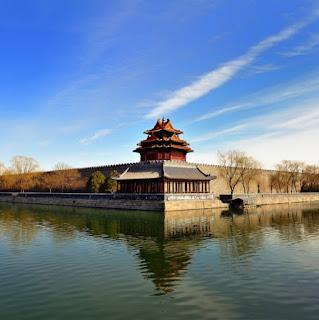 |
| Photo of The Forbidden City by xiaoxiao1999 at https://pixabay.com/photos/forbidden-city-turret-beijing-541501/ |
This world history resource focuses the age of exploration
and isolation in 1400 to 1800 and includes quiz questions
and answers and video links to related topics.
I utilized World History: Patterns of Interaction (Holt McDougal) for our world history textbook. It has multiple options for different learning styles and covers a wide array of information.
This quiz accompanies Chapter 19: pages 526-549.
Directions for the quiz:
- Scroll down and click on the thumbnail to enlarge to full screen.
- Click on the graphic to advance to the next screen.
- Choose an answer for each question.
- Compare your answers with those provided.
- Prince Henry the Navigator
- How does a compass work
- How to use a sextant
- Bartolomeu Dias
- Columbus, Vasco da Gama, & Zheng He
- Crash Course: Medieval China
- The Forbidden City
- Qing Dynasty
- Samurai, Daimyo, Matthew Perry, & Nationalism
- What is a Haiku
- Kabuki Theater
Thanks for visiting my Student Survive 2 Thrive blog.
Navigate my blog easily through my site map, topics
tabs on the right, or via my search bar.
Here are a few of my articles you may also find helpful this week:
- Week 19 Visual Arts: Claymation and Japanese Art
- Week 19 Ninth Grade ELA Assignments
- Huntington Beach State park and Atalaya Castle in South Carolina
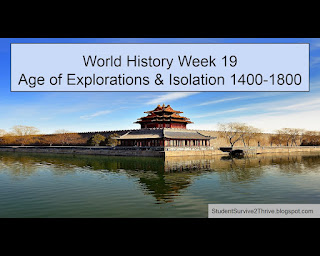 |
| World History Week 19 Age of Explorations & Isolation 1400-1800 |
 |
| Created by Katrena. All rights reserved. |
 |
| The correct answer is: All of these. |
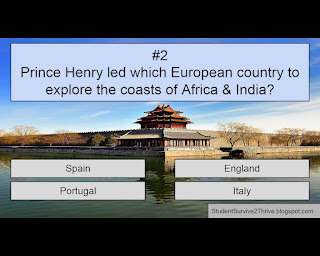 |
| Prince Henry led which European country to explore the coasts of Africa & India? Answer choices include: Spain, England, Portugal, Italy |
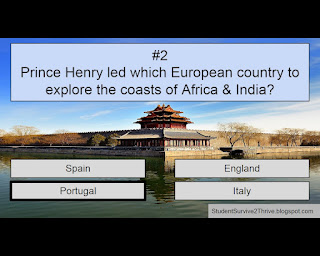 |
| The correct answer is Portugal. |
 |
| The correct answer is Christopher Columbus. |
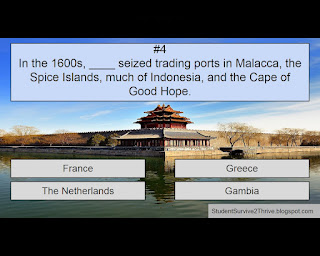 |
| In the 1600s, ____ seized trading ports in Malacca, the Spice Islands, much of Indonesia, and the Cape of Good Hope. Answer choices include: France, Greece, The Netherlands, Gambia |
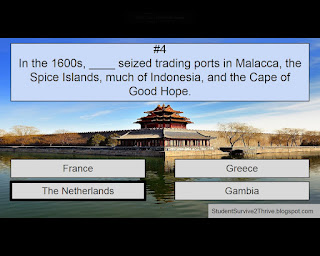 |
| The correct answer is: The Netherlands |
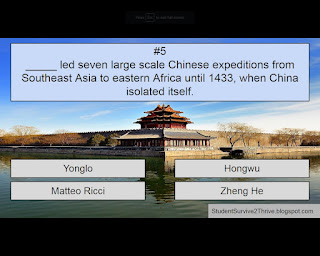 |
| _____ led seven large scale Chinese expeditions from Southeast Asia to eastern Africa until 1433, when China isolated itself. Answer choices include: Yonglo, Hongwu, Matteo Ricci, Zheng He |
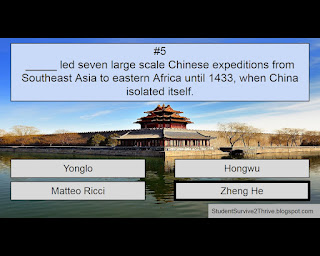 |
| The correct answer is Zheng He. |
 |
| Yonglo’s palace complex in the new capital of Beijing is called the ______. Answer choices include: White House, Palace of Versailles, Kremlin Palace, Forbidden City |
 |
| The correct answer is Forbidden City. |
 |
| What typically symbolizes the imperial family in China? Answer choices include: koi, dragon, meerkat, panda |
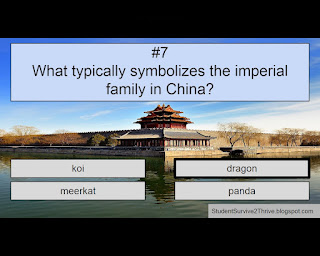 |
| The correct answer is dragon. |
 |
| By 1800, what commodity made up 80% of shipments from China to Europe? Answer choices include: spices, jade, tea, enslaved persons |
 |
| The correct answer is tea. |
 |
| In the 1600s & 1700s, China’s population decreased drastically and Chinese families highly favored girl babies over boys. Answer choices include: true, false |
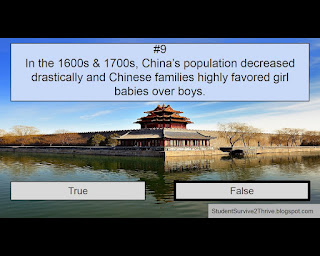 |
| The correct answer is false. |
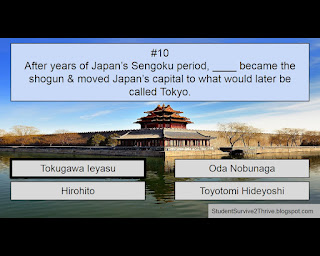 |
| The correct answer is Tokugawa Ieyasu. |
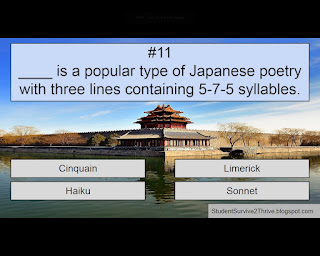 |
| ____ is a popular type of Japanese poetry with three lines containing 5-7-5 syllables. Answer choices include: Cinquain, Limerick, Haiku, Sonnet |
 |
| The correct answer is Haiku. |
 |
| The correct answer is: A woman created Kabuki theater. |
 |
| In the 1500s, the daimyo were particularly interested in people sailing to Japan from other lands because they brought ____. Answer choices include: weapons, rugs, books, spices |
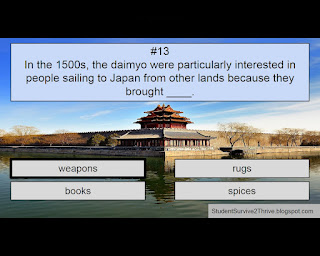 |
| The correct answer is weapons. |
 |
| After a 1637 rebellion, the shogun began to persecute Christians and forced all Japanese citizens to be faithful to Buddhism. Answer choices include: true, false |
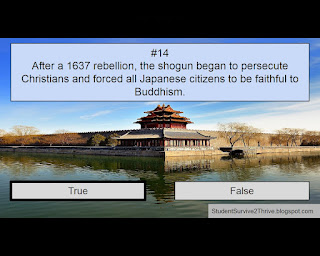 |
| The correct answer is true. |
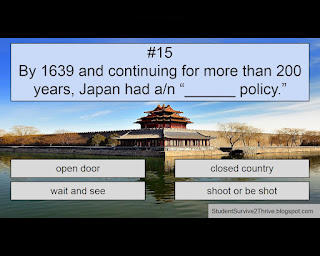 |
| By 1639 and continuing for more than 200 years, Japan had a/n “______ policy.” Answer choices include: open door, closed country, wait and see, shoot or be shot |
 |
| The correct answer is closed country. |
 |
| Find more resources at StudentSurvive2Thrive.blogspot.com |

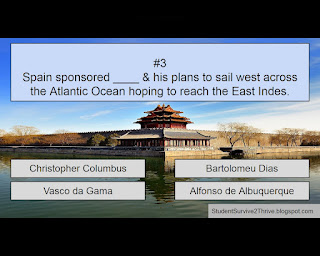


No comments:
Post a Comment
Thanks for reading my article and sending your comment! Please note that I do not place links to other web sites on this blog.
Note: Only a member of this blog may post a comment.